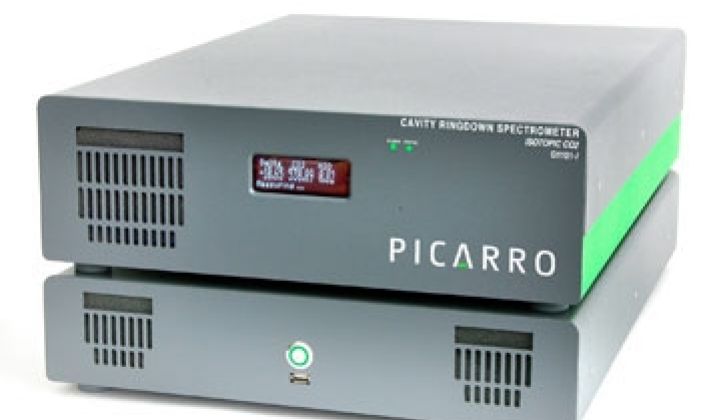On March 10, China and India formally agreed to sign the Copenhagen Accord, the international climate change agreement reached in Denmark late last year. The two most populous nations on Earth were also the last holdouts among major countries. To be sure, the Copenhagen Accord is a non-binding statement spanning only three pages. It is hardly a detailed road map for climate change policy and emissions reductions.
That said, the entry of China and India signals it is now time to start thinking more seriously about what a workable global policy would look like.
There will surely be some element of quotas, cap-and-trade, or emissions offsets. The developed world will likely subsidize developing nations. But one element entirely missing from the discussion is this critical piece of information. Namely, how will the nations of the world effectively measure emissions? At present, scientists can precisely measure the levels of greenhouse gases in the global atmosphere. They can also measure the emissions coming out of a single smokestack. However, in between those two extreme ends of the spectrum scientists have little insight into what is actually in the air. What is the in air coming off of San Francisco or New Delhi? Nobody really knows. California or New York State? Again, nobody knows.
Software programs (generally called carbon inventory or carbon accounting tools) can make a guess at it by estimating inputs, and are useful for managing carbon footprints. But such methods are not entirely reliable and are easy to manipulate. Top scientists are increasingly critical of these approaches and worried that, if taken as the final word, the numbers coming out of carbon inventory programs will mislead the world on the actual composition of the atmosphere. It's easy to understand their fear. With climate policy and emissions regulations, we may only get one shot to get it right. And with global emissions trading at $500 billion last year, evidence proving these emissions schemes are not working could create a massive market crash rivaling the Sub-Prime catastrophe.
So how to fill this void? The answer is actually quite simple. Measure the air, in real-time, everywhere. Full stop. Build a global network of emissions measurement stations to create a real-time atmospheric composition monitoring system. Call it the global Carbon Net. Now, the full disclosure. Our company, Picarro, makes greenhouse gas emission measurement systems that would likely compete for this business. So I am biased. But my logic is sound.
The basic infrastructure for a Carbon Net is mostly in place. Analyzers can be placed at the base of tall communications towers or atop buildings around the world and jacked into existing communications networks. In remote locations, emissions measurement gear can be placed on mountaintops or even floated in tethered weather balloons. Further, the precedent for a Carbon Net exists. In the U.S., a network of thousands of air quality measurement stations are run by state, local and federal entities to measure ozone and other hazardous gases. The continuous measurement data created by these stations have allowed places such as the City of Los Angeles to better understand and control their smog problems.
With sufficient coverage and sophisticated weather modeling tools to determine air flows in the well-mixed atmosphere, a Carbon Net could easily determine near-real-time greenhouse gas emission down to a grid of 10 kilometer squares for areas with significant populations (where most of the anthropogenic emissions are occurring). Such a network in the U.S. would cost roughly $300 million to build, by our estimates.
Major wireless telecommunications companies spend 10 times that amount each year on capital expenditures for their wireless networks. A similar global network would cost roughly $5 billion, or about 1% of the total transaction volumes of the global emissions trading markets last year. A Carbon Net would be an amazingly powerful financial tool by providing a sound, scientific footing to nascent emissions trading markets.
Equally important, a Carbon Net would allow cities, states, and nations to measure exactly what they are emitting and create a transparent reporting system for greenhouse gases. The Mayor of Los Angeles, the Governor of California, and the President of the United States could pull up a computer screen, look at real-time methane GHG output, and know whether they were in compliance -- and pinpoint where the problem areas are. Such a system would eliminate the inevitable nation-against-nation finger-pointing in a game of "Not my carbon!" that is sure to ensue if emissions quotas are enacted but carbon cops can't measure the air.
Most importantly of all, such a network would give the world solid information in real time about the efficacy of any new climate policies and the ability to change those policies on the dime. Several small emissions measurement networks are already taking shape in California, in China and in Europe. The science is sound. The costs are minimal. Build a network. Measure the air. Make sure carbon policy is working. Save the planet. It's that simple.
Michael Woelk is the CEO of Picarro, a maker of greenhouse gas analysis and detection equipment. Customers include the National Oceanic and Atmospheric Administration, the World Meteorological Organization, the California Air Resources Board, and the China Meteorological Administration.



